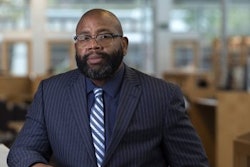JACKSON, Miss. — During public hearings to evaluate state spending, Mississippi lawmakers repeatedly asked education officials why some students are graduating from high school without being fully prepared for college.
“We spend $35 million a year, average, for remediation because we’re not getting it done in K-12,” Gray Tollison, R-Oxford, the Senate Education Committee chairman, said August 22 at the Capitol.
Kim Benton, chief academic officer for the state Department of Education, told lawmakers: “Many of our schools in this state do struggle finding highly qualified and effective teachers.”
Commissioner of Higher Education Glenn Boyce didn’t name school systems, but he said some are not providing the foundation of education that students will need to succeed in universities.
“Mathematics is an enormous concern of mine,” Boyce said.
Andrea Mayfield, executive director of the Mississippi Community College Board, said 50 to 80 percent of students at two-year colleges need remediation.
Some of those needing extra help are people who finished high school and worked several years before deciding to pursue a college degree, said John Moore, R-Brandon, the House Education Committee chairman.
“When they turn 30, they hit a brick wall,” Moore said.
Boyce worked in elementary and secondary education and for community colleges before becoming head of the university system. He said Mississippi would continue to struggle with the need for remediation “until we can get all three sectors of education in the same room to understand what ‘college-ready’ means.”
Legislators are holding several days of hearings, from now until November, to analyze whether public money was being spent efficiently. They also intend to examine the state tax structure.
House Speaker Philip Gunn, R-Clinton, told education officials that legislative leaders want to cut spending on administrative expenses.
“We want to put more money in the classroom,” Gunn said. “We believe that’s where the rubber meets the road. That’s where the action happens … so we want to do a critical examination of where dollars are going now.”









